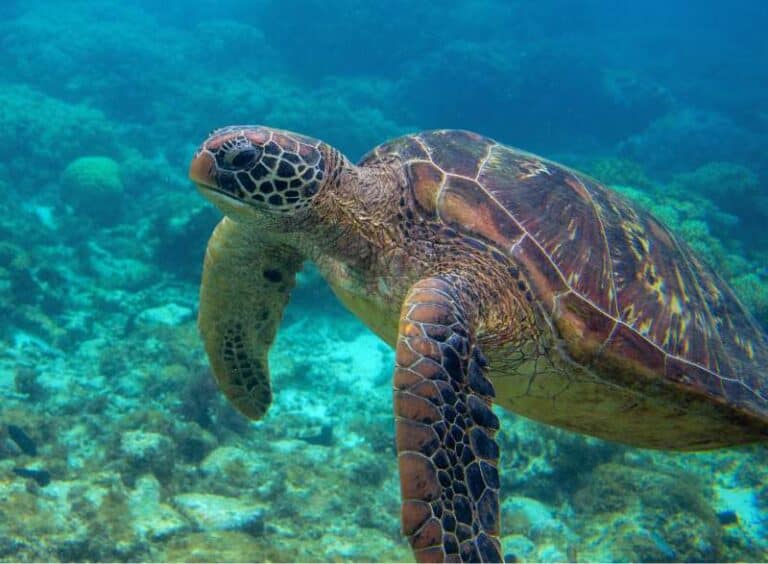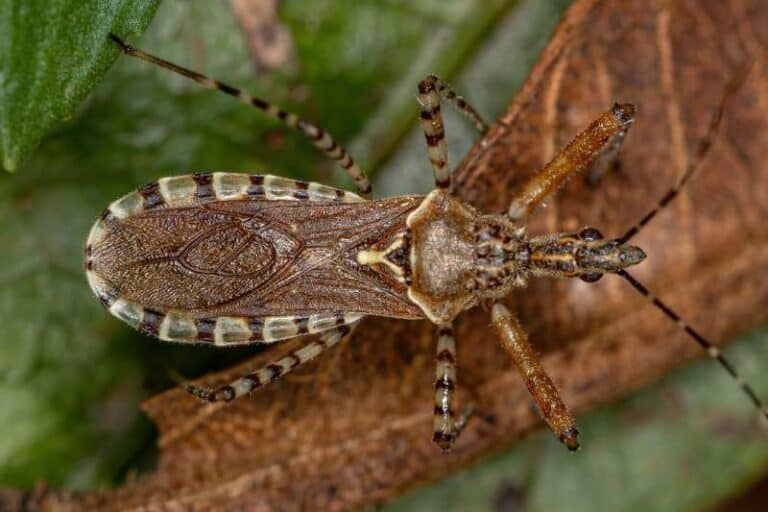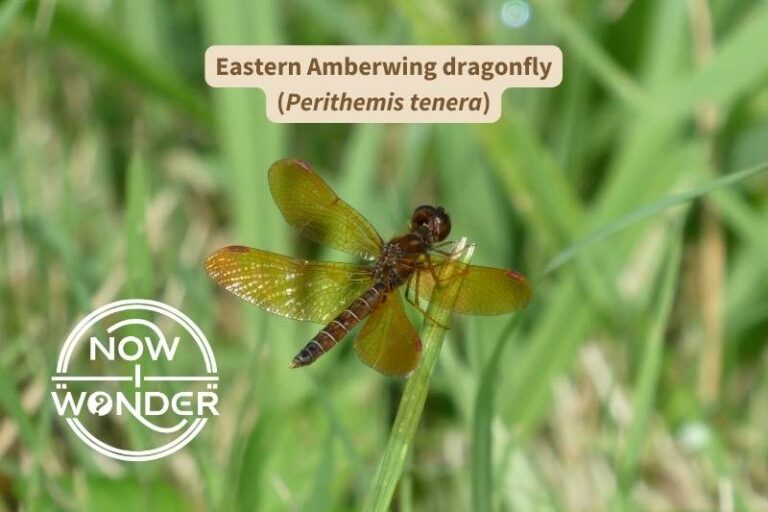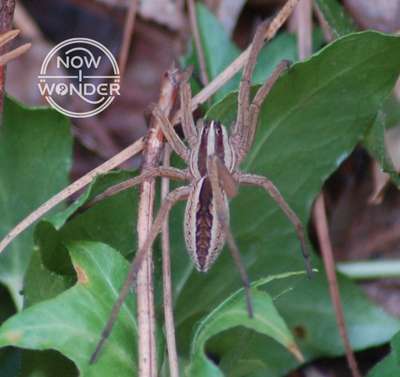Aquatic turtles spend their days in and under the water and are often seen floating at the surface. At first glance, this would seem unlikely behavior as turtles have shells on their backs; one would think they would sink straight to the bottom. How and why do turtles float?
Turtles float when they are more buoyant than water. At rest, most turtles are close to neutrally buoyant; they neither sink nor float. Healthy turtles adjust their buoyancy to float or dive at will by changing the amount of air in their lungs. Buoyancy control is vital as turtles breathe air.
Turtles are air breathing reptiles so those species that live in water must surface periodically to breathe. This post focuses on how turtles manage both floating and diving and what happens when their buoyancy control is disrupted.
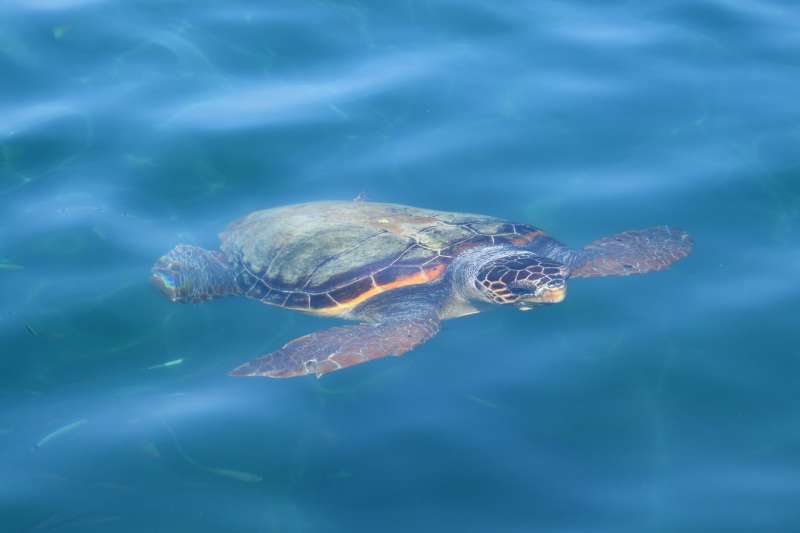
Normal buoyancy control
Healthy turtles manage their buoyancy in water by changing their specific gravity; they change their specific gravity by changing the amount of air they take into their lungs.
Specific gravity is defined as “the weight of a substance compared to an equal volume of water” (Taber’s Cyclopedic Medical Dictionary 1997). Water is the standard and has a specific gravity of 1.0. Air is “lighter” than water so rises to the surface.
If a turtle increases its lung volume by taking in or retaining more air than usual, its specific gravity goes down – it becomes more buoyant and the turtle will float easier. The reverse is also true; if a turtle decreases its lung volume by taking in less air or expelling more air than usual, its specific gravity goes up and the turtle will sink easier.
Turtles have evolved large ranges of lung volumes to support their aquatic lifestyles. For example, red-eared slider turtles (Trachemys scripta) have lung capacities equivalent to approximately 14% of body volume when neutrally buoyant. They can adjust this percentage across a range of less than 3% to almost 17% (Jackson 2011), allowing it to carefully adjust its depth.
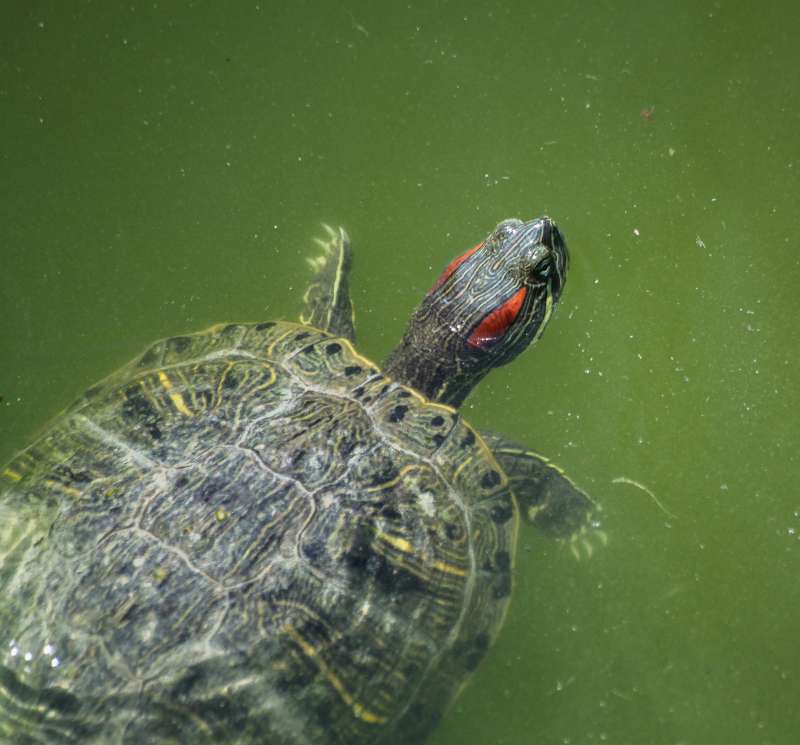
Buoyancy control problems
Sick or injured turtles may struggle to control their buoyancy. Buoyancy disorders can be either positive, which prevents them from diving, or negative, which prevents them from surfacing. Positive buoyancy disorder is more common and more obvious to humans; but both types are life threatening.
Overview of positive buoyancy disorder
Under normal circumstances, a turtle can easily maneuver through the water column. But sometimes, a turtle will struggle. It will float for long periods of time, ducking its head repeatedly under the water and rowing its flippers. However, despite significant effort, it is unable to submerge. It has “positive buoyancy disorder”.
While all aquatic turtles must breathe air and lay their eggs on dry land, most aquatic turtles feed underwater. If they cannot dive, they cannot feed. Positive buoyancy disorder will eventually kill a turtle as it will either starve or dehydrate to death.
Causes of positive buoyancy disorder
A turtle develops positive buoyancy disorder when it breathes in or retains too much air or develops gas pockets under its shell or in its gastrointestinal system.
Common causes of positive buoyancy disorder include:
- Propeller strikes: Boat propellers can crack turtle shells and tear turtle lungs, allowing air pockets to develop beneath the shell
- Cold shock or cold stunning: Water temperatures colder than about 50 degrees Fahrenheit (10 degrees C) (Turner et al. 2021) cause turtles to become lethargic and unable to breathe properly, allowing gas to build up in the lungs
- Ingestion of plastics: The world’s oceans are broadly and severely polluted with plastic, some of which can mimic natural turtle food sources or can be concentrated by other organisms which are then eaten by sea turtles. Plastics tend to float so can artificially increase a turtle’s buoyancy. Plastic can also cause intestinal disruption, resulting in abnormal build up of gas in the gastrointestinal system.
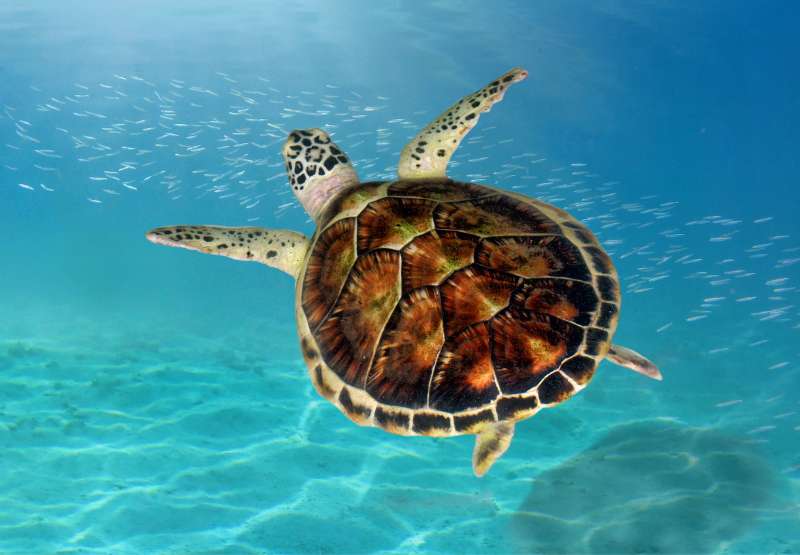
Overview of negative buoyancy disorder
Wild turtles with negative buoyancy disorder do not often come to the attention of humans; they simply sink out of sight so aren’t noticed as often as those who are trapped on the surface.
Turtles must breathe air and even the species that can remain underwater for long periods of time must surface to take a breath eventually. Under normal circumstances, turtles are slightly negatively buoyant so are more likely to sink than float if they do not compensate. For example, red-eared slider turtles have been measured at 1.05 (Jackson 2011), making them just slightly heavier in water than the water itself.
Turtles must expend energy to swim to and remain on the surface. Anything that increases their specific gravity beyond the point at which their swimming muscles can compensate will cause them to sink uncontrollably in the water column and eventually drown.
Causes of negative buoyancy disorder
A turtle develops negative buoyancy disorder when cannot or does not breathe in enough air or when its cannot swim properly.
Common causes of negative buoyancy disorder include:
- Respiratory infections: Lung infections can cause fluid to build up in turtles’ lungs, reducing ventilation and tissue oxygenation
- Propeller strikes: Boat propeller strikes can injure turtles’ flippers and their heads, impairing their ability to swim
- Cold shock or cold stunning: Water temperatures colder than about 50 degrees Fahrenheit (10 degrees C) (Turner et al. 2021) cause turtles to become lethargic and unable to breathe properly. While positive buoyancy disorder is more common in cold-stunned turtles, turtles can also inhale water if they become too weak to raise their heads clear of the water or time their breaths correctly.
Buoyancy disorders cause turtles to die slow, painful deaths. However, many wonderful organizations and volunteers work hard to save these magnificent animals every single day. The following are just some resources dedicated to saving both individual turtles and entire species. Please check them out and consider supporting them any way you can.
Turtles were already ancient when dinosaurs first walked the earth; they have survived everything the natural world threw at them up to now. But they are dying in record numbers and we can help. We can be more than just a problem; we can be the solution.
Resources and organizations
- NOAA Fisheries. https://www.fisheries.noaa.gov/
- World Wildlife Fund. https://www.worldwildlife.org/
- The Karen Beasley Sea Turtle Rescue and Rehabilitation Center, Surf City, NC https://www.seaturtlehospital.org/
- Georgia Sea Turtle Center, Jekyll Island, GA https://www.jekyllisland.com/activities/georgia-sea-turtle-center/
- The Turtle Hospital, Marathon, FL https://www.turtlehospital.org/
- MOTE Marine Laboratory and Aquarium, Sarasota, FL https://mote.org/hospital/turtle
- Whitney Laboratory for Marine Bioscience, University of Florida, Gainesville, FL https://www.whitney.ufl.edu/conservation–sea-turtle-hospital/
- Marine Science Center, Ponce Inlet, FL http://www.marinesciencecenter.com/conservation/sea-turtle-hospital.stml
- Sea Turtle Rescue Program, New England Aquarium, Boston, MA https://www.neaq.org/about-us/mission-vision/sea-turtle-rescue/
Related Now I Wonder Posts
To learn more about turtles in general, check out these other Now I Wonder posts:
To learn more about terrestrial and freshwater turtles, check out these other Now I Wonder posts:
- Eastern Box Turtle FAQs
- Are Eastern Box Turtles rare?
- Can you find turtles in rivers?
- River Cooter Turtles: Almost a research enigma
References
Jackson, Donald C.. 2011. Life in a Shell. Cambridge: Harvard University Press.
Taber’s Cyclopedic Medical Dictionary. 1997. 19th ed. Philadelphia (PA): F. A. Davis Company.
Turner RC, Innis CJ, Stacy BA, Hernandez JA, Hill RC, Scott KC, FrascaJr S, Garner MM, Burns RE, Arendt MD, et al. 2021. Steatitis in cold-stunned Kemp’s ridley sea turtles. Animals. 11(3):898. DOI: 10.3390/ani11030898



